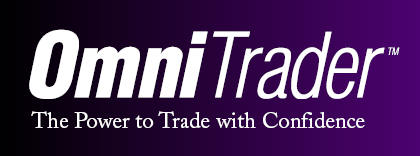

by Ed Downs, CEO & Founder of Nirvana Systems, Inc.
I clearly remember the first time I saw a Trading System. It was in 1981, at one of the first CompuTrac conferences, hosted by Tim Slater. I felt the little tingles go down my back, as I clearly saw the rhythm, the patterns, the magic that is market behaviour. Every example shown by the speakers, from Lane's Stochastics to Arms' Equivolume looked absolutely scrumptious. Yes, I was hooked. "Hey, I'm as smart as these guys," I patted myself, "And I am sure I can write a system that will make money in the markets. I'm going to do it."
Should YOU Write Your Own Trading Systems?
You have to ask yourself, "Why I am writing my own systems?" I have to admit, the appeal is irresistible. Writing your own system that beats the market! The anticipated joy is downright addicting. And a lot of so-called toolbox software has been sold to folks so they can sit and tweak on stochastics and relative strength until the cows come home. If you've been trying longer than that, I'd like to reassure you - so has everyone else. After sixty some-odd years of system writing, you would think that someone, somewhere would have discovered the magic key to riches, referred to in some trading circles as the "holy grail" trading system. (If you ever found the "holy grail," you could achieve everlasting wealth by just using it religiously) I haven't found the holy grail trading system yet. But, I think I have discovered something which works very well in all markets.
I call it...
The Personality of Markets Theory
You may have noticed that different markets often show an average behavior, or personality fairly consistently. Some contracts are quite volatile most of the time. Others tend to trend. Many system writers have taken to this idea by writing systems for specific commodities, where each system is "tuned" for the specific tradable, with names like "The T-BOND System". And, I think these systems (which are usually very expensive) tend to work better than generic systems or toolbox program systems. I actually purchased one of these market-specific systems back in 1990, and tested it for profitability. And it worked fairly well. But I found that even markets that tend to be consistent within themselves often exhibit periods of "trending", "trading range" or even "schizophrenic" behavior. I began to realize that no system was going to give me what I wanted (a system I could just use on all markets.) Obviously, what I needed was an approach that would adapt to the personality of the market it was being applied to.
I first discovered this idea by running massive tests on systems using MetaStock, a fine charting package by EQUIS International. Our company created some utilities that could run MetaStock on the outside, and we subsequently ran and collated output from thousands and thousands of tests. What I discovered was this: Markets often acquire personalities that make their behavior very predictive in the next time frame.
Here's a simple test you can run if you have a charting program with system testing abilities:
Write a nine-period stochastic system and test it on all futures contracts over the last 60 days. Undoubtedly, you will find a few contracts that generated good profits over this time period using stochastics. You don't even have to bring up the charts to know that you will find nice wave-like oscillations - a trading range market! And, the odds are better than 50% that a short term reversal signal on this contract, today, will be a good signal tomorrow. If you are a veteran system tester, you may be asking about now, "So, isn't that curve-fitting?" No. I didn't say "Trade stochastics on this contract from now on," I said, "The odds are good for a short-term reversal today, because the contract is exhibiting a trading range personality right now." That is, I am using the system to identify which contracts have a trading range personality right now.
Further experimentation led us one step further on this idea. Through exhaustive tests and thousands of runs, we discovered that if you combine multiple systems discovered through historical testing into one, consensus vote, you arrive at an even more accurate indication of current personality. That is, if several different (yet similar) systems arrive at a signal at the same time, the validity of the personality assessment is higher.
OmniTrader is the Result of All this Research
We applied these principles in the design of OmniTrader. The program has 120 systems built in - from stochastics to money flow to candle patterns. OmniTrader determines which systems are working well right now on each individual security, and then uses a consensus vote of those systems to generate market signals, as shown at the right. The signals OmniTrader generates are always adapting - always changing to match the underlying personality of the securities being tested.
The true beauty of this approach is it's automatic. It is never necessary to write a trading system or "go back to the drawing board". In essence, OmniTrader creates a new system for each security every time the automatic analysis is run. This enables the program to find better trading candidates, in less time, with practically zero effort on the trader's part. All the trader has to do is peruse through the list of signals generated each day, inspect the charts, and trade according to the personality that was discovered through OmniTrader's automated process.